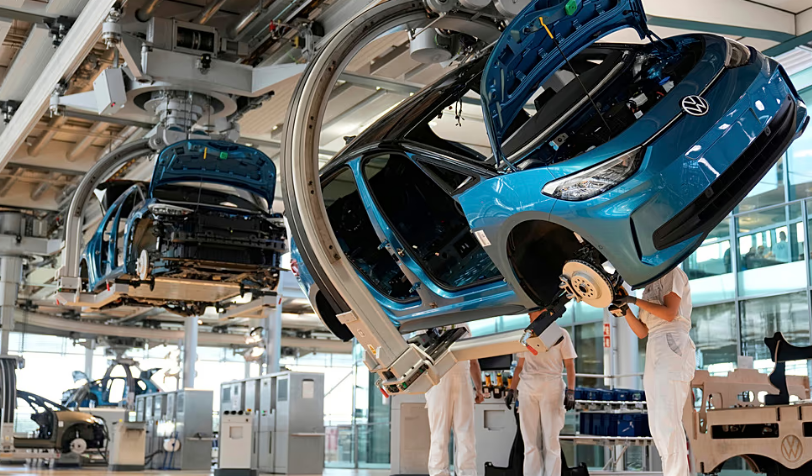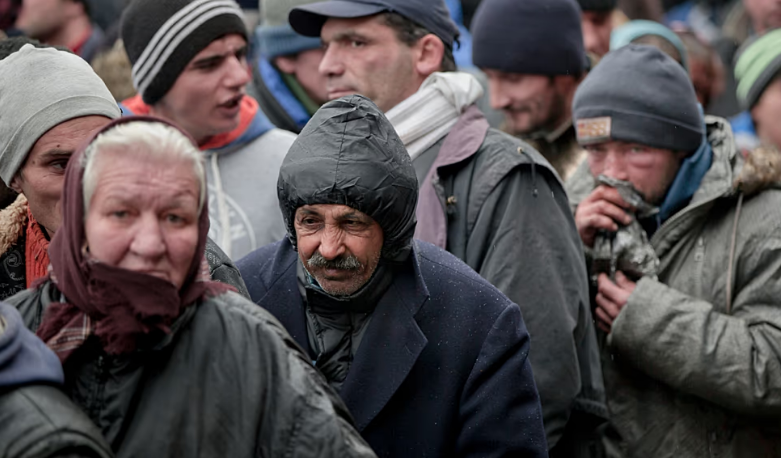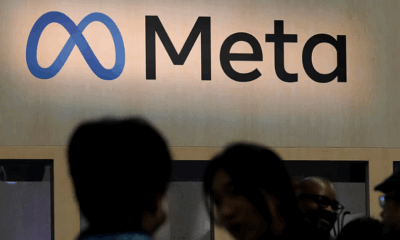Business
EU Electric Car Registrations Surge as Germany and Poland Lead Strong Growth

Battery-electric car registrations in the European Union climbed sharply in October, rising 25.7 per cent from the same month last year, as new data showed widening adoption across both major and emerging markets. Figures released by the European Automobile Manufacturers’ Association (ACEA) indicate the sector continues to gain momentum despite uneven performance among member states.
Between January and October 2025, battery-electric vehicles accounted for 16.4 per cent of all new cars registered in the EU. This marks a significant rise from the 13.2 per cent recorded during the same period in 2024. In total, 1,473,447 electric cars were registered across the EU27 in the first ten months of the year — an increase of more than 301,000.
Germany remained the bloc’s largest electric-vehicle market, contributing over 434,600 registrations and recording one of the strongest growth rates, with EV uptake climbing 39.4 per cent year-on-year. The country’s robust expansion played a central role in lifting the EU’s overall performance.
Several smaller markets also posted standout gains. Slovenia saw EV registrations nearly double with a 99.3 per cent increase, while Slovakia rose 77.5 per cent, Lithuania 62.7 per cent and Bulgaria 58.1 per cent. Analysts say these jumps reflect improving charging networks, national incentives and falling battery prices.
Among the EU’s four biggest economies, Spain registered the sharpest rise, recording an 89.7 per cent jump to 81,100 vehicles. Italy followed with a 26.5 per cent increase, while France posted more modest growth of 5.3 per cent.
Poland recorded the steepest growth rate across the EU, with new EV registrations up 124.6 per cent compared with last year. The total number of vehicles — 30,641 — still represents only 6.4 per cent of the national car market, but the rapid rise signals shifting consumer attitudes and strengthening policy support.
Not all member states recorded gains. EV registrations declined in Croatia, Luxembourg, Malta, Romania and Estonia, where slower infrastructure expansion and changes in subsidies have contributed to weaker demand.
Across all fuel types, the EU car market grew 1.4 per cent in the first ten months of 2025 — the fourth straight month of growth. Hybrid-electric vehicles remained the most popular option for buyers, securing a 34.6 per cent market share. Petrol and diesel models continued their decline, dropping to a combined 36.6 per cent from 46.3 per cent a year earlier.
Among major automakers, Volkswagen Group recorded a 5.1 per cent rise in sales, BMW grew 6.3 per cent and Mercedes posted a 2 per cent increase. Renault registered a 7 per cent jump. Stellantis, Toyota and Hyundai all reported declines, while Tesla’s sales tumbled by nearly 40 per cent. Chinese EV manufacturer BYD saw an almost 240 per cent surge in EU sales, reflecting its rapid expansion in European markets.
Business
BHP Withdraws Bid for Anglo American, Clearing Path for Competitors and Restructuring Plans

Australian mining giant BHP has formally ended its pursuit of Anglo American, a move that closes the door on what would have been one of the decade’s most significant mining mergers. The decision follows preliminary talks and comes just weeks after Anglo American’s board rejected BHP’s latest offer, the company’s second approach in the past 18 months.
BHP said in a statement on Monday that it would no longer consider a combination of the two companies. “Following preliminary discussions with the Board of Anglo American, BHP confirms that it is no longer considering a combination of the two companies,” the company said. The miner highlighted the “highly compelling potential” of its own growth plans, signalling a strategic shift from ambitious acquisitions to organic expansion.
A successful BHP-Anglo merger would have created a dominant global copper producer, consolidating assets critical to electric vehicle and microchip industries. BHP said it still believed the deal had strong strategic merits and could generate value for stakeholders, but the challenges involved proved too significant.
Anglo American, founded in Johannesburg in 1917, operates across multiple jurisdictions, including regions where governments are particularly sensitive to control over strategic resources. BHP’s proposed merger required Anglo to conduct two separate demergers of its stakes in Anglo American Platinum and Kumba Iron Ore. The board described these demergers as introducing “significant uncertainty” for investors, noting that Anglo Platinum and Kumba together represent roughly $15 billion (€13 billion) and 34% of the proposed total consideration.
The rejection underscores the complexity of mega-deals in the mining sector. In recent years, BHP has preferred targeted acquisitions in potash and copper over large-scale mergers, reflecting growing investor caution around deals with heavy regulatory and operational hurdles. By emphasising the promise of its internal growth strategy, BHP appears to be prioritising stability and measured expansion over high-profile acquisitions.
Under Rule 2.8 of the UK Takeover Code, BHP is effectively barred from making another approach for at least six months unless circumstances change, such as board approval from Anglo American, the arrival of a rival bidder, or amendments to the Takeover Code.
The withdrawal opens the way for Anglo American to advance its own plans. Shareholders are expected to vote soon on a proposed merger with Canada’s Teck Resources, a deal that could create a company valued at over $50 billion (€43.3 billion). Meanwhile, other mining rivals are likely to reassess their options in the copper and broader resource markets.
BHP’s exit marks a significant moment in global mining, reflecting a shift from high-stakes consolidation to cautious, internally driven growth strategies as companies navigate complex regulatory and geopolitical landscapes.
Business
Wide income gaps shape Europe’s poverty thresholds as more than 72 million remain at risk

Millions of Europeans continue to struggle with low incomes, yet the level considered sufficient for a comfortable life differs sharply across the continent. New Eurostat data shows that more than 72 million people in the EU were classed as “at risk of poverty” in 2024, equal to 16.2 percent of the population, underscoring how living conditions vary dramatically between countries.
The impact of the slowdown in major global economies will be “smaller” on the UAE’s growth and exports due to its relatively less exposure to those markets compared to other markets across the region, the World Bank said.
Eurostat defines the at-risk-of-poverty rate as the proportion of people whose median equivalised disposable income falls below 60 percent of their national median. The agency stresses that this measure reflects low income relative to peers rather than actual deprivation, meaning it does not directly indicate whether someone is unable to meet basic needs.
Across the EU, the median equivalised income per person in 2024 was €21,582. Anyone living on less than €12,949 per year, or roughly €1,079 per month, is considered at risk of poverty. Country-level thresholds, however, reveal wide economic divides. In the EU, the level ranges from €391 per month in Bulgaria to €2,540 in Luxembourg. When including candidate countries and EFTA members, the range stretches from €201 in Turkey to €2,596 in Switzerland.
Several countries, including Latvia, Portugal, Croatia, Lithuania, Poland, Greece and Slovakia, have thresholds below €750. Hungary, Romania, Bulgaria, Serbia and Turkey fall below €500. Among the EU’s largest economies, Germany records the highest threshold at €1,381, followed by France at €1,278, Italy at €1,030 and Spain at €965.
For households, the gap becomes even more visible. A family of two adults with two children under 14 faces a threshold 2.1 times higher than that of a single person. This equals €2,266 in the EU, €423 in Turkey and €5,452 in Switzerland.
Economists note that these variations reflect differences in productivity and industrial structure. Giulia De Lazzari of the International Labour Organization said countries with strong finance, technology or advanced manufacturing sectors tend to generate higher wages, which lifts their poverty thresholds.
The gaps narrow when measured in purchasing power standards, designed to account for price differences. Even then, significant contrasts remain. In PPS terms, thresholds range from 449 in Serbia to 1,889 in Luxembourg. Turkey, Hungary, Slovakia and Greece rank among the lowest, while Norway, Switzerland, Austria and the Netherlands sit near the top. Among major economies, Germany has the highest threshold, with France next. Spain and Italy are both recorded at 1,060.
Eurostat’s 2024 figures show that the overall at-risk-of-poverty rate stands at 16.2 percent across the EU. The lowest rate is found in Czechia at 9.5 percent, while Turkey and North Macedonia exceed 22 percent. Many Balkan and Eastern European countries register higher exposure. Among Europe’s largest economies, Spain has a rate of 19.7 percent and Italy 18.9 percent, while France at 15.9 percent and Germany at 15.5 percent remain slightly below the EU average.
Business
Bitcoin Struggles After October Crash as Analysts Cite Tariff Tensions, Market Uncertainty and Aggressive Trading

Bitcoin remains under pressure after a turbulent two months in which the cryptocurrency shed significant value, rattled by global economic uncertainty and intense market speculation. The token, which surged to record highs earlier this year, briefly fell below $90,000 this week for the first time in seven months before edging back to around $91,800 by Thursday afternoon in Europe. It did enjoy a modest 0.73% lift on Thursday, helped by a rebound in global stocks after stronger-than-expected earnings from Nvidia eased fears of an AI-driven market bubble.
Analysts say Bitcoin’s troubles can be traced back to 10 October, when a dramatic crash erased more than $1 trillion in value across the broader crypto market. The selloff accelerated after US President Donald Trump threatened new tariffs on China, sparking fresh anxiety about the global economy. More than $19 billion in leveraged positions were wiped out as prices tumbled sharply.
“There have been several catalysts, but it seems as if the biggest drivers are long-term selling by ‘OGs’, an uncertain economic climate, and a mass deleveraging event on the 10th October,” said Nic Puckrin, CEO of Coin Bureau. He noted that “OGs” — long-time Bitcoin holders sitting on large reserves — have been steadily offloading their positions, adding considerable supply to the market.
The downturn has coincided with a period of heightened uncertainty in the United States, where a government shutdown has delayed key economic data releases and complicated forecasts for growth and inflation. Investors are now reconsidering expectations of an interest-rate cut at the Federal Reserve’s December meeting. Transcripts from the Fed’s October discussions show policymakers split on whether borrowing costs should be reduced, adding to volatility across financial markets.
“Bitcoin is increasingly driven by macro moves,” Puckrin said, reflecting concerns that as crypto becomes more intertwined with mainstream markets, shocks in one sector could trigger turbulence in another.
But not all analysts blame the losses on economic policy or geopolitics. Carol Alexander, a cryptocurrency expert and finance professor at the University of Sussex, said Bitcoin’s price swings often stem from aggressive tactics used by professional traders on offshore exchanges. These platforms, which face minimal oversight, allow hedge funds and high-frequency trading firms to employ strategies such as spoofing and order-book manipulation to trigger rapid movements.
“Their business model relies on generating sharp volatility. They do not care whether the price rises or falls; they care only that it moves quickly,” Alexander said. She warned that retail investors often take on extreme leverage in an attempt to chase gains, only to be wiped out when markets swing against them. Liquidity dries up once those smaller traders are forced out, she added, often triggering a sharp rebound that encourages new speculation. “The whole system behaves like a football match played in a stadium with no referee.”
Despite the setbacks, some analysts believe the market is nearing a floor. Puckrin expects a recovery, citing growing institutional participation and broader adoption of crypto-related technology. “Crypto has been through multiple cycles and it always emerges stronger,” he said.
-

 Entertainment1 year ago
Entertainment1 year agoMeta Acquires Tilda Swinton VR Doc ‘Impulse: Playing With Reality’
-

 Business2 years ago
Business2 years agoSaudi Arabia’s Model for Sustainable Aviation Practices
-

 Business2 years ago
Business2 years agoRecent Developments in Small Business Taxes
-

 Home Improvement1 year ago
Home Improvement1 year agoEffective Drain Cleaning: A Key to a Healthy Plumbing System
-

 Politics2 years ago
Politics2 years agoWho was Ebrahim Raisi and his status in Iranian Politics?
-

 Business1 year ago
Business1 year agoCarrectly: Revolutionizing Car Care in Chicago
-

 Sports1 year ago
Sports1 year agoKeely Hodgkinson Wins Britain’s First Athletics Gold at Paris Olympics in 800m
-

 Business1 year ago
Business1 year agoSaudi Arabia: Foreign Direct Investment Rises by 5.6% in Q1



























